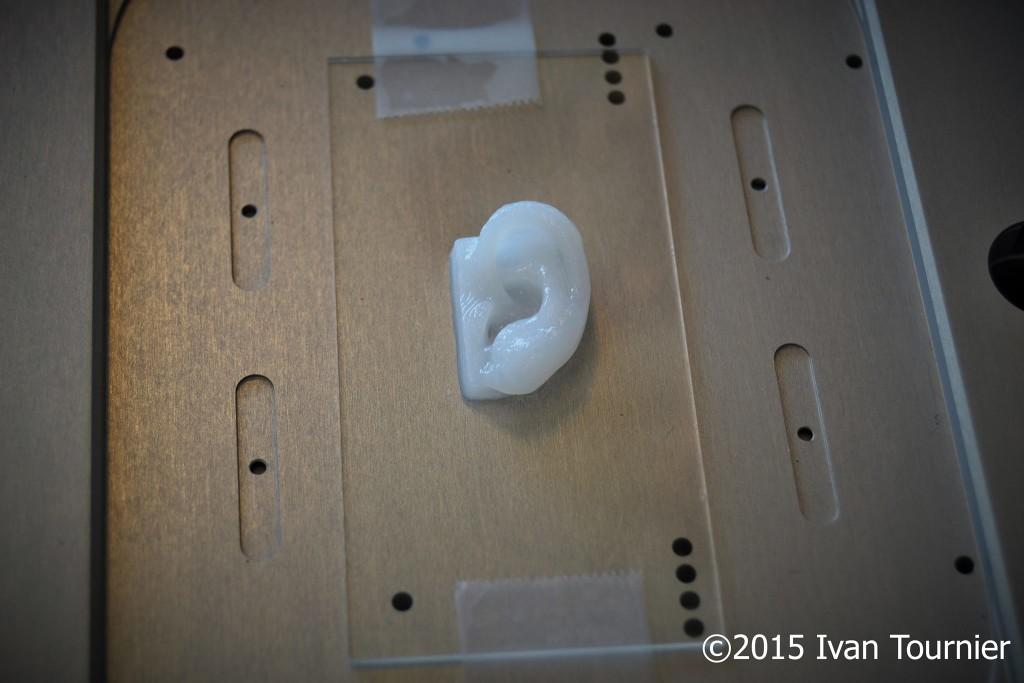Most of us learn about cartilage in early science classes—a source of mild fascination, these are areas that many of us at first think are bone, but learn quite quickly that they are instead firm areas of flexible and connecting tissue—and found in the joints between the bones of the shoulders, elbows, and knees as well as other areas like the nose and ears.
As we begin to age, issues with cartilage become more common. From accidents during sports to the wear and tear of age, when cartilage in an area such as the knee is damaged, patients often experience symptoms such as constant swelling and pain and difficulty in locomotion. As years of activity cause this cartilage to wear away, along with the growing lack of synovial fluid as lubrication, many seek a solution for relief as bones begin to rub together in an excruciating fashion.
We probably all know someone who has experienced replacement surgery for an area like the knee or hip, with artificial parts serving to help end pain and allow for freedom in movement again. And while we’ve followed stories regarding customized 3D printed parts to help with those surgeries, this technology may now be expanding to change things in a much more substantial fashion thanks to bioprinting.
Last year a method was developed by the Department of Health Sciences and Technology at ETH Zürich in Switzerland allowing for cartilage to be replaced in patients in the most personalized type of healthcare imaginable—using their own cells to promote growth in the lab, resulting in 3D printed cartilage. The 3D printed implant is also comprised of biopolymer that breaks down in the body as the cartilage settles in, eventually leaving only the true and quite natural cellular structure, which in a short of amount of time would grow in as it nothing had ever happened. This can be helpful in areas also where cartilage is debilitated not due to activity and accident but due to pathology in an area like the nose or ear. And these areas actually seem to be the main emphasis in cartilage regrowth research thus far.
The process is heating up even further now as Paul Gatenholm and his team have completed research and testing on mice that’s showing bioprinting of cartilage to offer true potential as a medical treatment. Ongoing at the Wallenberg Wood Science Center in Sweden, this project by Gatenholm and his team was recently the subject of discussion at the 251st National Meeting & Exposition of the American Chemical Society (ACS).“Three-dimensional bioprinting is a disruptive technology and is expected to revolutionize tissue engineering and regenerative medicine,” says Gatenholm.
“Our team’s interest is in working with plastic surgeons to create cartilage to repair damage from injuries or cancer. We work with the ear and the nose, which are parts of the body that surgeons today have a hard time repairing. But hopefully, they’ll one day be able to fix them with a 3D printer.”
While using 3D printed implants that work with a scaffolding concept is not new, using them for regenerating cartilage is. The challenge so far has been in finding materials suitable for a viable scaffold. Their initial efforts resulted in a messy conglomeration, so they worked to find something that would offer the sufficient structure.
As is often the case, help was to be found in nature. Experimenting with plant-based polysaccharides found in brown algae–combined with cellulose fibrils from wood—the researchers found success—with the materials not coming as a huge surprise, considering the specialty at WWSC is working with wood materials in research. The next step was to actually begin testing the viability of these structures in mice—and in triumph, they discovered the samples not only held up in structure, but survived and grew cartilage inside the animal subjects.
 Much of Gatenholm’s work has been possible, as we’ve been following, through the use of CELLINK, an innovative bioink system which is said to be ‘ushering in a new age of bioprinting,’ and is being used in research with 3D bioprinting of the ear, meniscus, trachea, and articular cartilage. The ink works in conjunction with the Inkredible 3D printer, known as the first 3D bioprinter with clean chamber technology. CELLINK is a startup that was founded in Sweden by Gatenholm and R&D engineer Ivan Tournier. According to Gatenholm, the secret of the Inkredible 3D printer is that through employing a pneumatic extrusion system, the cells are able to remain viable. Priced as low as $5K, the bioprinter is meant to offer a way for scientists around the world to begin entry-level bioprinting and then graduate to more complex hardware.
Much of Gatenholm’s work has been possible, as we’ve been following, through the use of CELLINK, an innovative bioink system which is said to be ‘ushering in a new age of bioprinting,’ and is being used in research with 3D bioprinting of the ear, meniscus, trachea, and articular cartilage. The ink works in conjunction with the Inkredible 3D printer, known as the first 3D bioprinter with clean chamber technology. CELLINK is a startup that was founded in Sweden by Gatenholm and R&D engineer Ivan Tournier. According to Gatenholm, the secret of the Inkredible 3D printer is that through employing a pneumatic extrusion system, the cells are able to remain viable. Priced as low as $5K, the bioprinter is meant to offer a way for scientists around the world to begin entry-level bioprinting and then graduate to more complex hardware.
With the success of the bioprinted cartilage, these new breakthroughs certainly sound as if they will translate to humans, but the team has stated that they aren’t quite ready for that step. Gatenholm is currently working with a plastic surgeon as they make their way toward trying this in clinical trials in the near future. The Swedish professor, currently on staff at Chalmers University of Technology, also taught a bioprinting course at Stanford last year, where he emphasized his specialty in bioinks. What are your thoughts on this progress in bioprinting, as well its potential future? Discuss in the 3D Printed Cartilage forum over at 3DPB.com.
Currently serving as professor of Biopolymer Technology at Chalmers University of Technology and Adjunct Professor at Joint School of Biomedical Engineering and Sciences at Virginia Tech and Wake Forest University and Adjunct Professor of Biomaterials at Wake Forest Institute for Regenerative Medicine in Winston-Salem, North Carolina, Dr. Gatenholm has published over 300 papers, and specializes in material science with an emphasis on the biomimetic design of materials.
[Source: CNET]Subscribe to Our Email Newsletter
Stay up-to-date on all the latest news from the 3D printing industry and receive information and offers from third party vendors.
You May Also Like
3D Printing Unpeeled: New Arkema Material for HP, Saddle and Macro MEMS
A new Arkema material for MJF is said to reduce costs per part by up to 25% and have an 85% reusability ratio. HP 3D HR PA 12 S has been...
3D Printing News Briefs, January 20, 2024: FDM, LPBF, Underwater 3D Printer, Racing, & More
We’re starting off with a process certification in today’s 3D Printing News Briefs, and then moving on to research about solute trapping, laser powder bed fusion, and then moving on...
3D Printing Webinar and Event Roundup: December 3, 2023
We’ve got plenty of events and webinars coming up for you this week! Quickparts is having a Manufacturing Roadshow, America Makes is holding a Member Town Hall, Stratafest makes two...
Formnext 2023 Day Three: Slam Dunk
I’m high—high on trade show. I’ve met numerous new faces and reconnected with old friends, creating an absolutely wonderful atmosphere. The excitement is palpable over several emerging developments. The high...


































